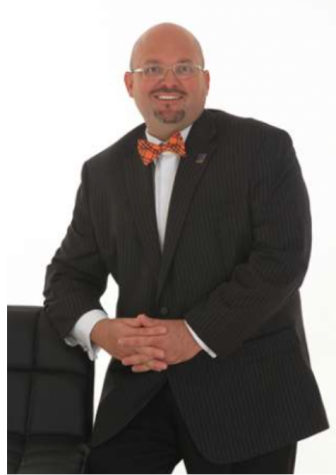Racial Discrimination in the Time of COVID-19
Racial discrimination has been a problem for centuries targeting many different races. The coronavirus outbreak can be traced to the Wuhan Province in China. From there it spread around the world making this a global pandemic. In the United States, this virus has taken its toll killing about 57,000 people, the number rising each day. For decades, minority communities have faced discrimination, during this crisis not much has changed but it is also a learning opportunity since it shines a light on the disproportionate situations each race finds themselves in.
According to a 2017 census, there are 18.2 million Asian Americans living in the US. (“Profile: Asian Americans.”) The United States has had a very precarious relationship with Asian-Americans dating back to during and prior to World War 2. This virus has added to this situation. Ever since it came to the US, many Asian-Americans have faced discrimination and harassment. There have been reports of kids being pushed off their bikes, families being spit on and businesses being vandalized. (Zhou, Li.)
These harassment claims are a representation of decades of hidden xenophobia against this community. For example in World War 2, after the bombing of the Pearl Harbor Base in Hawaii, anyone of Japanese descent was forced to go to internment camps under an Executive Order. Many Asian-Americans were taken to internment camps despite not being of Japanese descent. Perpetuating a stereotype that still exists today, that every person who looks Asian is automatically considered to have the same ascendance. Similarly, this has been seen during this pandemic. Since the virus originated in China these harassment incidents show that many people believe all Asians are Chinese. In fact, no one should be blamed, especially not the whole community of Asian-Americans, some of which have no Chinese ancestry. This assumption is a form of discrimination since it is taking away these communities’ individuality by grouping them all together and assuming they are all of Chinese ancestry. Thus, making it clear why many Americans are quick to judge anyone who looks Asian since it has been a stereotype that has been engraved in people’s minds.
Other races have fallen victim to this virus as well, specifically Latinos and Black people. A 2017-2018 study shows that 83.8% of Latino workers and 80.3% of black or African American workers could not work from home. (Gould, Elise, and Heidi Shierholz.) Meaning that most of these people are essential workers, putting them in the position where they see lots of people daily which can expose them to the virus. Thus, Latino and African American communities are more likely to become sick. Specifically, the Latino communities that don’t have easy access to healthcare or unemployment benefits are the ones who suffer the most. In Washington state Latinos make up 13% of the state’s population but 25% of the people infected were Latinos. (Singh, Maanvi, and Mario Koran.) On the other hand, nationwide Black people account for ⅓ of infections even though they only represent 13% of the US population. (Brooks, Rodney A.) This data shows that even though they make up a small amount of the nations/states population they make up a large amount of infections. This supports the idea that since these people are essential workers and might not have good healthcare benefits they are far more susceptible than the rest of the population to become sick. This shows the disproportion in the working class and in the healthcare system, where some have better access to healthcare while others do not. The majority of people who face those consequences are the minority communities.
Although the virus doesn’t see race, it is severely affecting the minority communities, showing the unequal conditions between the races in the US. Asian-Americans are not all Chinese they come from a variety of different countries around Asia, making these harassment situations even more troublesome because they show the hidden racism deep in the American population.
Works Cited
Brooks, Rodney A. “African Americans struggle with disproportionate COVID
death toll.” National Geographic, 24 Apr. 2020, www.nationalgeographic.com/history/2020/04/coronavirus-disproportionately-impacts-african-americans/. Accessed 1 May 2020.
Gould, Elise, and Heidi Shierholz. “Not everybody can work from home.”
Economic Policy Institute, 19 Mar. 2020, www.epi.org/blog/black-and-hispanic-workers-are-much-less-likely-to-be-able-to-work-from-home/. Accessed 1 May 2020.
“Profile: Asian Americans.” HHS.gov,
minorityhealth.hhs.gov/omh/browse.aspx?lvl=3&lvlid=63. Accessed 1 May 2020.
Singh, Maanvi, and Mario Koran. “‘The virus doesn’t discriminate but
governments do’: Latinos disproportionately hit by coronavirus.” The Guardian, 18 Apr. 2020, www.theguardian.com/us-news/2020/apr/18/the-virus-doesnt-discriminate-but-governments-do-latinos-disproportionately-hit-by-coronavirus. Accessed 1 May 2020.
Zhou, Li. “How the coronavirus is surfacing America’s deep-seated anti-Asian
biases.” Vox, 21 Apr. 2020, www.vox.com/identities/2020/4/21/21221007/anti-asian-racism-coronavirus. Accessed 1 May 2020.
Opinion Disclaimer: The opinions, beliefs, and viewpoints expressed by the various contributors to this website are their own, and do not necessarily reflect the opinions, beliefs, viewpoints, or official policies of The Baldwin School of Puerto Rico.
Your donation will support the student journalists of The Baldwin School of Puerto Rico. Your contribution will allow us to purchase equipment and cover our annual website hosting costs.
I’m Lorena, 16, and a junior at Baldwin high school is almost over, and I’m not too happy about that. I’ve been at Baldwin since Pre-K and I really...


